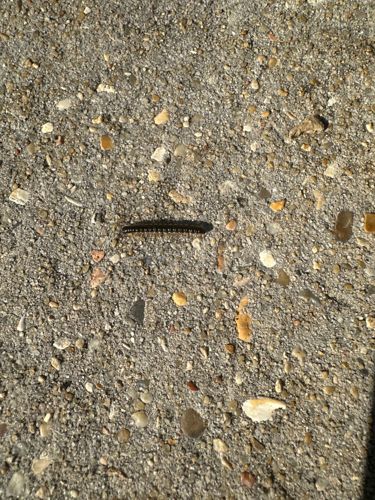Millipede
Scientific Name: Diplopoda (Class)
Order & Family: Order: Julida (likely based on appearance), Class: Diplopoda
Size: Typically from 1 cm to over 15 cm, depending on the species. The one in the image appears to be about 2-5 cm.

Natural Habitat
Damp, dark places under rocks, logs, leaf litter, and in soil; often found in gardens, forests, and sometimes in basements or cellars.
Diet & Feeding
Detritivores, feeding primarily on decaying organic matter like dead leaves, wood, and sometimes fungi. They play a crucial role in decomposition.
Behavior Patterns
Nocturnal; slow-moving; defensive mechanism often involves coiling into a spiral and/or exuding a foul-smelling liquid to deter predators. They do not bite or sting.
Risks & Benefits
Risks: Some species can release defensive chemicals that may cause minor skin irritation or staining if handled. They are generally harmless to humans. Benefits: They are beneficial decomposers, helping to break down organic matter and enrich the soil.
Identified on: 10/18/2025